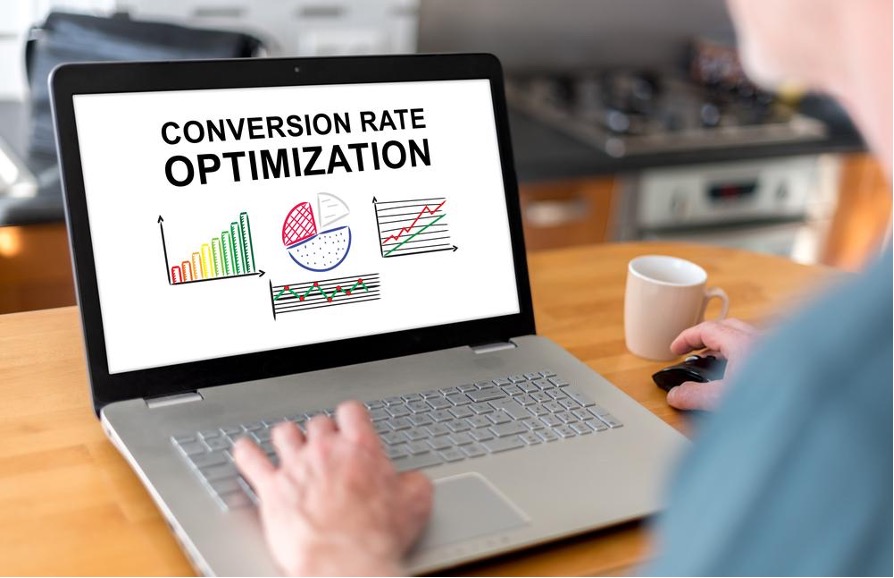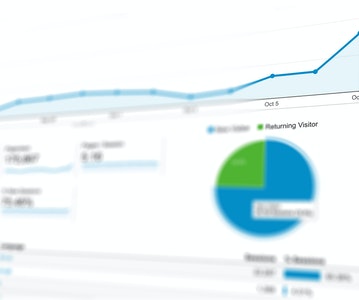This article is about Digital Marketing
The Beginner's Guide to Conversion Rate Optimization
By NIIT Editorial
Published on 04/06/2023
CRO improves a website or landing page's performance to enhance conversions. CRO optimises design, content, and user experience to persuade visitors to buy, fill out a form, or sign up for a newsletter. CRO incorporates user behaviour analysis, trials, and data-driven improvements to maximise conversions and commercial results.
Companies' bottom lines depend on CRO. Businesses may boost leads, revenue, and marketing ROI by raising conversion rates. CRO converts current website visitors into consumers rather than just increasing traffic. It optimises digital assets, improves user experience, and helps organisations understand their target audience's preferences and behaviours. Businesses may increase conversion rates, customer happiness, and growth and profitability by optimising the conversion process.
This blog will explore Conversion Rate Optimisation (CRO) and provide tips to boost conversion rates on websites and landing pages. The blog will cover CRO best practises, testing methods, user experience optimisation, compelling design, and data and analytics for informed decision-making. This blog discusses ways to improve internet conversions, digital marketing outcomes, and corporate objectives.
Table of Contents:
- What is Conversion Rate Optimization?
- Benefits of Conversion Rate Optimization
- Conversion Rate Optimization Strategies
- Conversion Rate Optimization Tools
- Conversion Rate Optimization Best Practices
- Common Conversion Rate Optimization Mistakes
- Conclusion
What is Conversion Rate Optimization?
Increase the number of people who perform the required action on your website by using conversion rate optimisation (CRO). In order to maximise the possibility of visitors performing the intended activities, it is necessary to analyse user behaviour, identify areas for improvement, and make data-driven adjustments.
In the end, conversion rate optimisation (CRO) is all about boosting sales, leads, and subscriptions, among other business outcomes.
1. CRO Process
- Identifying Areas of Improvement:
Optimisation opportunities on a website or landing page are the initial step in conversion rate optimisation. To do this, you need to analyse user data, perform user surveys, and utilise tools like heatmaps and session recorders to understand how users interact with your product.
Businesses may improve the user experience and increase conversions by analysing visitor behaviour on their website.
- Developing a Hypothesis:
The following phase, once possible improvement areas have been discovered, is to generate hypotheses using data and user feedback. A hypothesis is a theory that suggests a potential answer or adjustment that might increase profits.
One such theory proposes that fewer uncompleted transactions would occur if the checkout procedure is made easier.
- Testing Variations:
The next step in CRO is to generate variants or conduct experiments to test the hypothesis. In A/B testing, two or more iterations of a page or element are shown to various subsets of site users to see which one performs better.
Businesses may collect empirical evidence on which adjustments improve conversion rates by comparing the results of several variants.
- Analyzing Results:
After completing the experiments and compiling the data, the next stage is analysis. Finding out which alterations had the most effect on the intended actions requires comparing the conversion rates of several variants.
Businesses may learn about customer likes and dislikes, trends of behaviour, and the success of recent adjustments by analysing collected data.
2. Importance of Continuous CRO
The ability to constantly improve and optimise digital assets is why continuous CRO is so crucial for firms. Market dynamics and consumer tastes are always shifting. Businesses can keep ahead of the competition, respond to changing client requirements, and get the most out of their digital channels if they regularly measure and enhance their conversion rate. The goal of CRO is to improve conversion rates and fuel long-term growth by identifying and testing novel ideas and optimising the user experience.
Benefits of Conversion Rate Optimization
1. Increased Conversion Rates
Conversion Rate Optimisation (CRO) is useful since it can boost conversion rates. Businesses may build a more convincing and simplified user experience by analysing user behaviour, finding improvement areas, and applying data-driven adjustments. As a result, more site visitors will convert into paying customers by making a purchase, completing a form, or signing up for a service.
2. Improved User Experience
Conversion rate optimization (CRO) is concerned with improving the user's experience on a website or landing page. Businesses may improve website usability, friction points, and user happiness by introducing changes based on user feedback and testing alternative versions. A happy consumer is more likely to buy, but they'll also come back again and be loyal to your brand.
3. Better Understanding of Target Audience
The technique of CRO helps firms learn more about their customers. Businesses may learn a lot about their customers' tastes, requirements, and motivations by analysing user data, conducting user surveys, and examining behaviour patterns. Businesses may use this information to improve engagement and conversion rates by creating marketing content and designs that are more relevant to their target demographic.
4. Increased Revenue and Profits
CRO has a noticeable effect on financial outcomes. Conversion rate optimisation allows organisations to increase conversions without raising marketing spend or visitor count. That implies a company's current internet traffic may generate more income and a better return on investment (ROI) than ever before. Increasing the conversion rate even a little bit may have a huge effect on profits.
5. Competitive Advantage
Businesses may get an edge in the digital marketplace by adopting CRO techniques. Businesses may outdo the competition in terms of customer satisfaction by constantly iterating on and improving their websites and landing pages. Having an advantage in the market may be as simple as having a website that is easy to use, intuitive, and conversion optimised.
6. Long-Term Benefits
CRO is not a one-and-done activity, but rather a continuing procedure. What you learn from testing and tweaking your conversion rate optimisation strategy may be used to improve your other marketing efforts. This data may be used to guide future website redesigns, advertising campaigns, and product development decisions by providing insight into user behaviour, preferences, and successful design aspects. By prioritising CRO, companies ensure their future growth and prosperity.
Conversion Rate Optimization Strategies
1. Understanding Website Visitors
- Conducting User Research:
Conversion rates may be improved by learning more about your website visitors. Use methods like surveys, interviews, and usability testing to learn about your users' needs, wants, and expectations. You may use this qualitative information as a guide for future optimisation efforts.
- Analyzing Website Data:
Use Google Analytics and similar technologies to compile numerical information about site visits. To learn more about your visitors' habits, look at analytics like bounce rate, time on page, and conversion funnels. This information will help determine which pages are successful and where users may be abandoning their purchase decision.
2. Designing Effective Landing Pages
- Best Practices for Landing Page Design:
Conversion rates may be increased by fine-tuning your landing pages. Make use of a clean design, simple copy, and a compelling call to action (CTA) to encourage readers to act.
Make sure the website loads fast and is simple to use. Include credibility boosters like customer endorsements and security credentials.
- Landing Page Optimization Tips:
You may learn what makes your landing pages successful by doing A/B testing. Try out various headlines, call-to-action positions, button colours, and visuals. Run split-tests to find out which versions of your landing page really result in greater conversion rates.
Landing page optimization should be an ongoing process that relies on data to inform changes.
3. Implementing Persuasive Copywriting
- Writing Effective Headlines and Subheadings:
Create attention-grabbing headers and subheadings that convey the value proposition effectively. Be persuasive by pointing out the positive outcomes that will result from the intended user action. The communication should be brief and in line with the visitor's goals.
- Creating Compelling Product Descriptions:
Increase conversions by writing customer-friendly product descriptions. Emphasise the most important qualities, advantages, and selling aspects. Make use of vivid language and social evidence like ratings and reviews to bolster your case. To get people to act, use compelling call-to-actions (CTAs).
4. Improving Website Usability
- Navigation Optimization Tips:
Improve the site's usability by making the menus easy to understand and utilise. Make sure your site's navigation is simple and intuitive. To help users find their way around, name menu items sensibly, and think about incorporating breadcrumb navigation. Make it easier for customers to find what they're looking for by enhancing the search features.
- Mobile Optimization Strategies:
Mobile optimisation is becoming more important as mobile internet use continues to climb. Make sure your site responds well to various screen resolutions. Mobile-friendly websites load quickly, require little scrolling, and make it easy to fill out forms on tiny displays. Make sure your website works well across a range of mobile devices by testing it extensively.
Conversion Rate Optimization Tools
1. A/B Testing Tools
- Google Optimize:
For those interested in A/B testing and personalisation, Google offers a free service called Google Optimise. It enables you to generate several variants of your website or landing pages and compare their relative efficacy. Useful data on user behaviour and conversion metrics may be accessed via the tool's smooth integration with Google Analytics.
- Optimizely:
Optimizely is a well-liked A/B testing platform because of its intuitive UI and powerful testing features. It includes sophisticated targeting options and makes it possible to design experiments without the need to learn any code. For more advanced optimisation tactics, Optimizely provides further capabilities like personalisation and multivariate testing.
- VWO (Visual Website Optimizer):
VWO is an integrated platform for A/B testing, heat mapping, and analytics on site visitors' actions. A/B testing, visitor interaction tracking, and conversion data analysis are all made simple with VWO. The platform also has a visual editor that allows you to adjust your website without needing to know any code.
2. Heat Mapping and Visitor Recording Tools
- Hotjar:
Hotjar is an all-inclusive solution for optimising conversion rates, with capabilities including heat mapping, visitor tracking, and feedback collecting.
Clicks, scrolling, and mouse movements may all be shown on a heat map, allowing you to pinpoint areas of interest or friction on your website. Observing recorded sessions helps you better understand how visitors behave.
- Crazy Egg:
To help you maximize your website's ROI, Crazy Egg offers heat mapping and split testing tools. It creates heat maps that show where visitors are clicking, scrolling, and generally spending their time on your sites. In addition to heat maps, scroll maps, and confetti maps are available for analysis of user interaction with the product. You can see how minor changes to your pages affect conversion rates using A/B testing in Crazy Egg.
- Lucky Orange:
Heat mapping, visitor records, and real-time statistics are just some of the features that make Lucky Orange a powerful tool for optimising conversion rates. In the form of heat maps, click maps, and scroll maps, it offers visual representations of user activity.
You may also observe and analyse user interactions by logging visitor sessions. You may get a deeper insight into user behaviour using Lucky Orange's live chat and form analytics.
3. Analytics and Data Tracking Tools
- Google Analytics:
Traffic, user behaviour, and conversion metrics may all be better understood with the help of Google Analytics, a robust web analytics tool. You may monitor KPIs, create sales funnels, and assess the efficacy of your marketing initiatives with its help.
Google Analytics provides insightful information for assessing strengths and weaknesses and enhancing conversion rates.
- Kissmetrics:
Kissmetrics is a consumer analytics software that monitors user activity across many advertising platforms. User behaviour, conversion events, and lifetime value are all shown. In order to better comprehend user behaviour patterns and optimise conversions according to client categories, Kissmetrics provides sophisticated segmentation and cohort analysis.
- Mixpanel:
Mixpanel is an analytics platform with a focus on user behaviour and event monitoring. It gives in-depth insights on conversion paths, retention rates, and user engagement by following the behaviours of visitors to your site or app. You can optimize your users' experiences and fix conversion issues with the aid of Mixpanel's statistics.
Conversion Rate Optimization Best Practices
1. Testing and Experimenting Regularly
Conversion rates may be improved by consistent testing and experimentation. You may learn what your audience responds to best by doing A/B testing, multivariate tests, or even just making little adjustments. Optimising conversion rates requires constant A/B testing of various aspects including headlines, graphics, colours, and calls to action.
2. Focusing on the User Experience
Optimising for conversion rates relies heavily on the quality of the user experience. Make sure the website or landing page you're using is easy to browse, has a nice design, and is straightforward to use. Faster website loads, easier forms, and more readily available data. Focus on making your site mobile-friendly, and make sure it displays correctly on all devices.
3. Using Data to Inform Decisions
Decisions must be made in a data-driven manner if conversion rate optimisation is to be successful. Make use of analytics software to keep tabs on vital indicators and analyse user activity and conversion paths. Use user comments, heat maps, and other data to determine where you can make enhancements. Make smarter choices and direct optimisation efforts using this data.
4. Prioritizing High-Impact Changes
Changes that can have a major effect on conversion rates should be prioritised. Focus on the headlines, calls to action, and page layouts that have the most potential to affect user engagement and conversions. Prioritise investing in these areas for maximum return before moving on to less important details.
5. Collaborating with Other Teams
Optimising your conversion rate is a group effort that needs input from throughout your organisation. Align strategy and successfully execute improvements to optimisation by working collaboratively with marketing, design, and development teams. Involve people from around the company to maximise conversion rates, as they will bring fresh perspectives and knowledge to the table.
Common Conversion Rate Optimization Mistakes
1. Making Assumptions Without Data
Making assumptions or relying on personal judgements rather than statistics is a typical blunder made while attempting to optimise conversion rates. If you want to make smart choices, you need to collect and analyse data. You can't assume that adding a certain design or message piece would increase conversions. Instead, use A/B testing or other forms of experimentation to evaluate and confirm your hypotheses.
2. Focusing on the Wrong Metrics
Overemphasis on vanity metrics that have little impact on conversions is another common error. Website or social media follower counts may not necessarily be indicative of a campaign's effectiveness in converting visitors into buyers. Pay close attention to indicators of success including click-through and conversion rates as well as income produced. If you want to see actual improvements from your optimisation efforts, you should focus on the following key KPIs.
3. Not Testing Enough Variations
Testing and experimenting are essential to improving conversion rates. The failure to conduct sufficient experiments or to accept just minor improvements is a typical blunder. Discovering major enhancements requires concurrently testing several variants of essential parts. Determine whether headlines, images, layouts, or calls to action (CTAs) are most effective by testing out various permutations.
4. Ignoring the User Experience
Conversion rate optimization fails miserably when the user experience is ignored. Users are more likely to quit the conversion process if it is difficult to navigate, has a cluttered design, or takes too long to load. Put ease of use, mobile compatibility, readability, and simplicity of layout first. In order to fix any usability problems that may be preventing conversions, you should do user tests and collect feedback.
5. Not Collaborating with Other Teams
Various departments within your organisation should work together on conversion rate optimisation. Missed chances and inefficient optimisation tactics might result from a failure to cooperate. Include the appropriate departments in the optimisation process, such as marketing, design, development, and others. Use their knowledge, perspective, and input to create all-encompassing plans that cover the whole conversion process.
Conclusion
CRO, or conversion rate optimization, is a method for boosting the proportion of site visitors who become paying customers. Conversion rate optimization entails studying customer actions, conducting tests, and adjusting factors based on the results. In order to reach their goals, firms need CRO to increase their return on investment (ROI) from their current traffic.
Conversion rate optimization is crucial for long-term success in today's highly competitive online market. Businesses may boost revenue and profits by prioritising CRO to enhance the user experience and boost conversions. It's a continual procedure that calls for constant scrutiny, testing, and tweaking in light of new facts.
Implementing CRO methods is essential if you want to maximise your website's potential and increase conversions. Carry out extensive user research, examine data from the website, create efficient landing pages, fine-tune the text, and enhance the website's usability. Analyse data and learn from experiences using tools like A/B testing and heat mapping.
Consider enrolling in a digital marketing course to hone your CRO abilities and learn the current industry standards. Courses like this teach students all they need to know about Conversion Rate Optimisation and other crucial areas of digital marketing. You can get ahead in the ever-changing field of digital advertising if you devote some time and money to your education.
Always keep in mind that CRO is a process, not a destination. Always look to learn more, base decisions on facts, and improve the user experience. You may enhance conversions and accomplish your company objectives by using CRO tactics and realising your website's full potential. Get started with CRO right now to see your company grow in the digital world.
 Sign Up
Sign Up
















































































































































































































































































































































































































































































